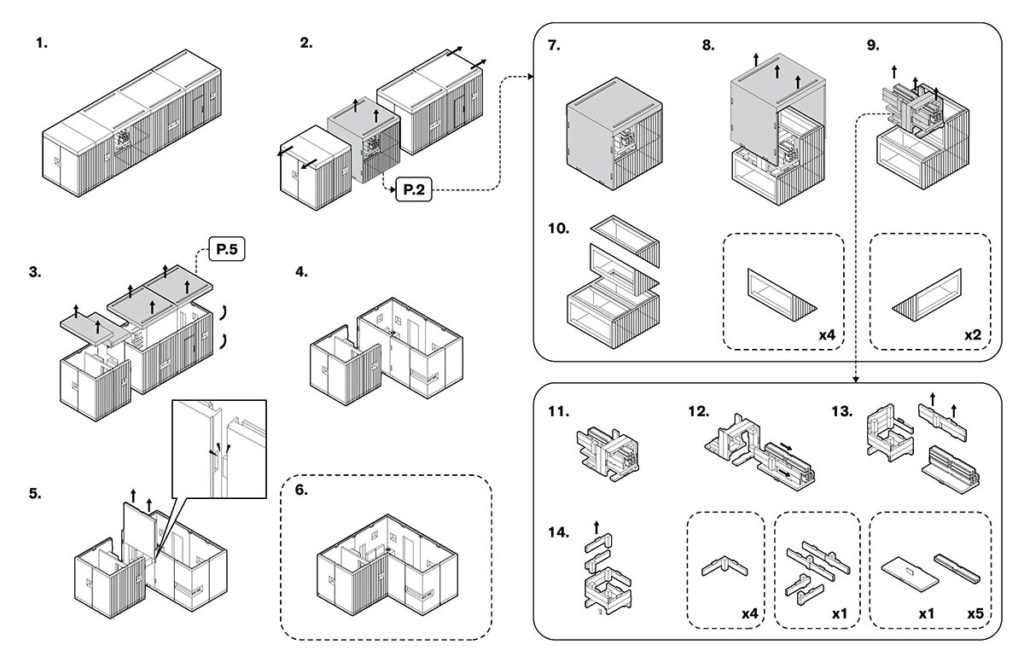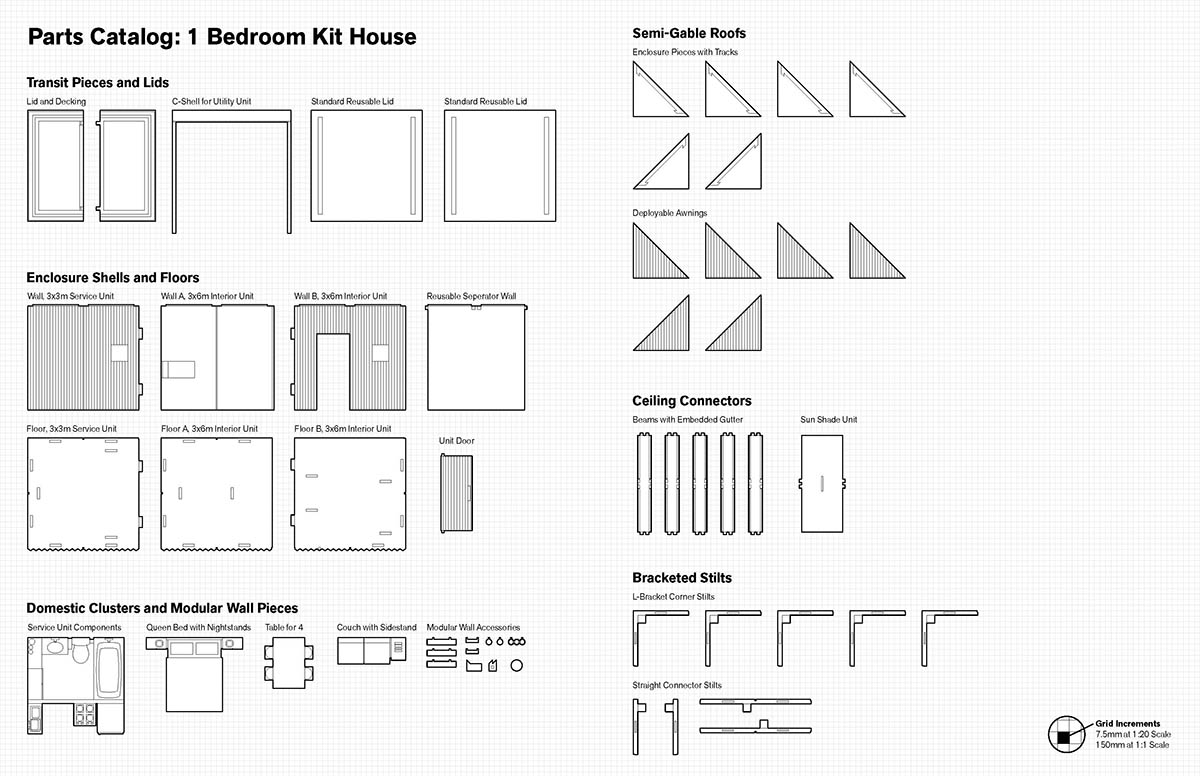Model As Building, Building As Model II

by Adrian Wong (MArch II ’20)
The interest of this project lies between living and packaging.
The most notable commercially packaged houses are perhaps catalogue homes produced by companies like Sears Roebuck that were popular around the 1920s. All materials for the house would be packaged into a train container and delivered to the recipient, and built by contractors hired locally by the client. The first wave of mail-order homes died down during the great depression. Some kit house companies continued after World War II, but most homebuyers flocked to the new, inexpensive suburban cookie-cutter houses. The latest attempt that resembles a catalogue house are Lowe’s Katrina Cottages, with walls designed to withstand 140 mile-per-hour winds, intended to provide temporary housing for residents who lost their homes to Hurricane Katrina. The product was unsuccessful and has since been discontinued because it was feared they would lower property values in neighborhoods.
In most OSM projects present today, modularity is often addressed as means of production rather than design. Prefab houses are typically fabricated in a linear process where parts are manufactured and then put together either on-site or in a factory and will remain the same state until demolition. This project is interested in a non-linear process of OSM, where parts are manufactured and put together the same way, but the they possess the ability to be rearranged on site. The reconfigurable parts include all dwelling and service spaces and extend to apertures and articulation as well. The flexible typologies allow for potential changes in site, program, seasons and occupants. The current catalogue consists of 5 units: utility, service and 3 different sized interiors. Firstly, the side walls can be removed from the interior units and connect to other units for expansion.
Secondly the service unit, which requires most planning because its access points are contingent to the sizes of the interior volumes it is connected to. I.e. for the 1-bedroom or studio kits, the service unit can only be accessed from a single side for the connection to remain enclosed. It is a different case for the 2-bedroom, in the configuration where the service unit is placed in the middle of a 9x9m house, where it can be accessed from all sides.
Lastly the utility unit, which can house 8 semi-gables that are reconfigurable on top of interior units to form a full gable or sawtooth. This is easier to reconfigure than interior volumes, and can be changed between summer and winter for solar gain and a greater degree of direct/indirect sunlight depending on the program.













